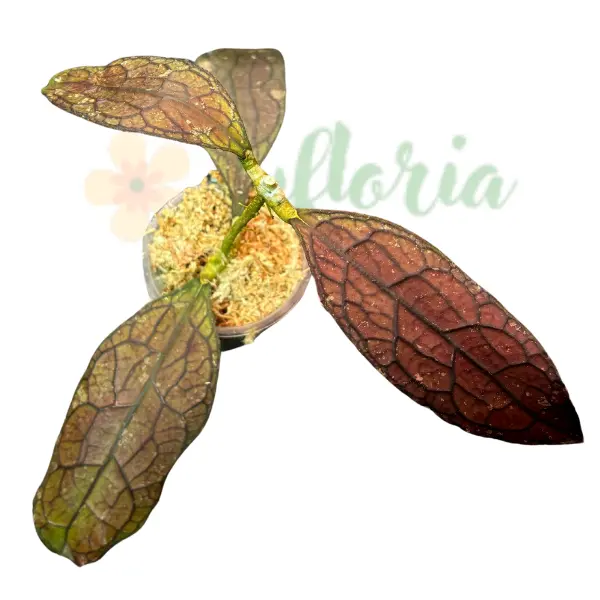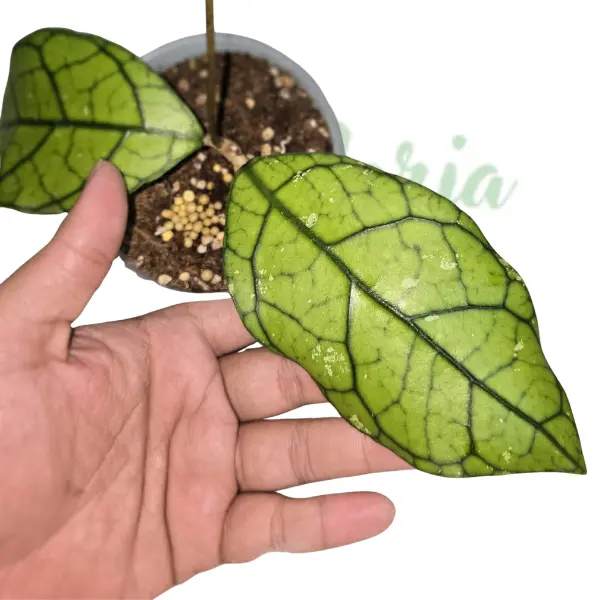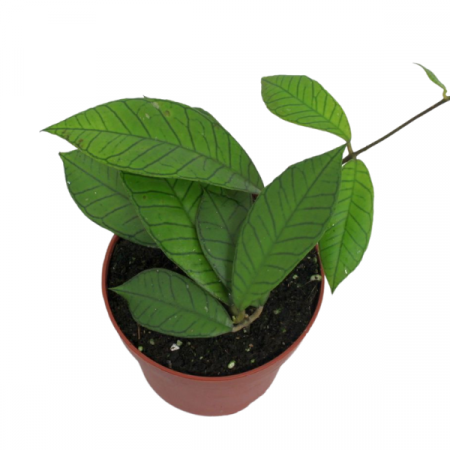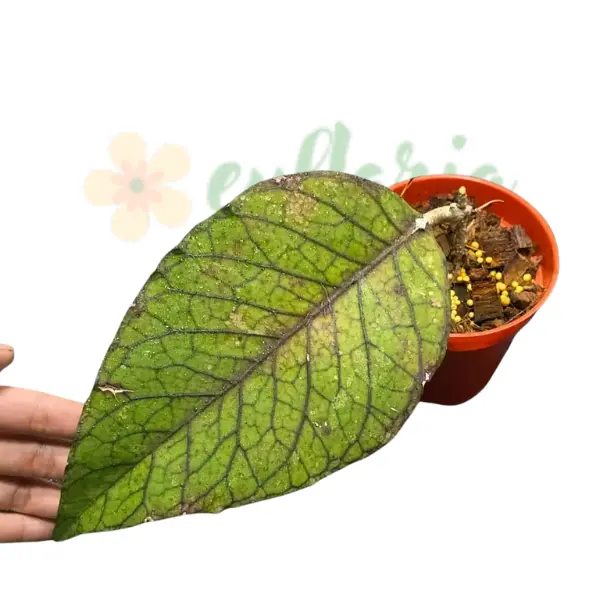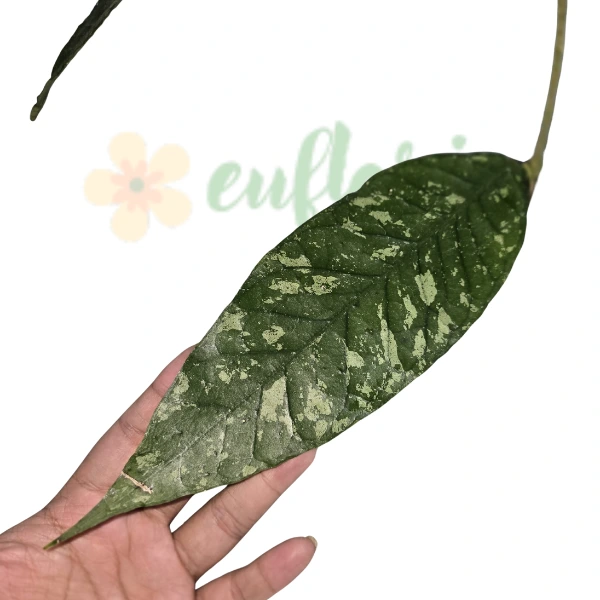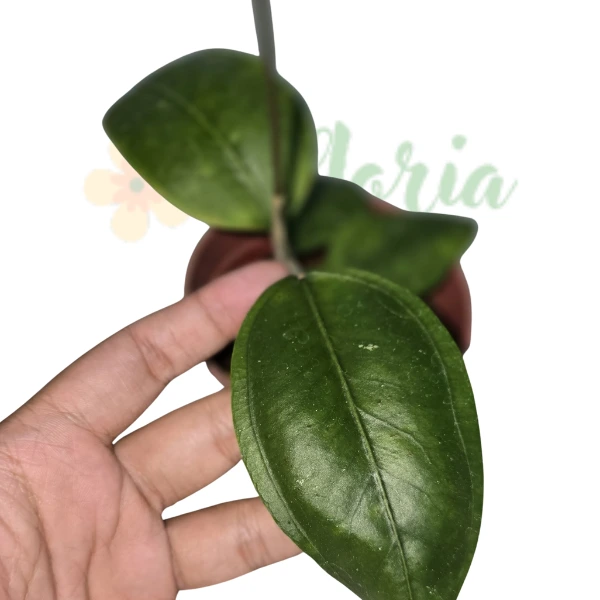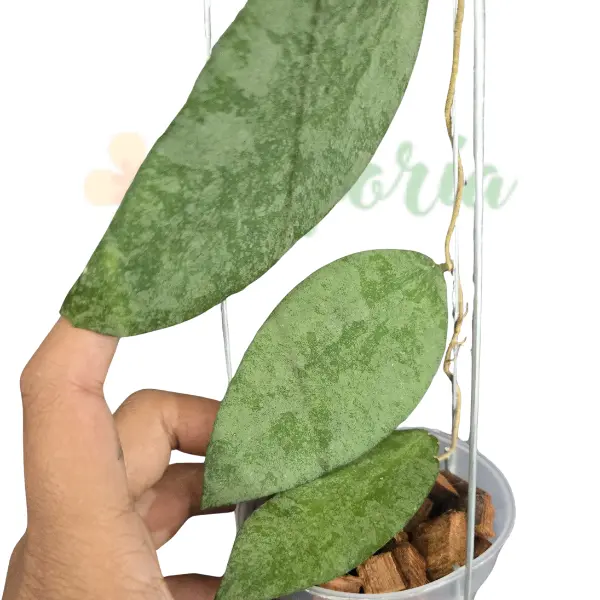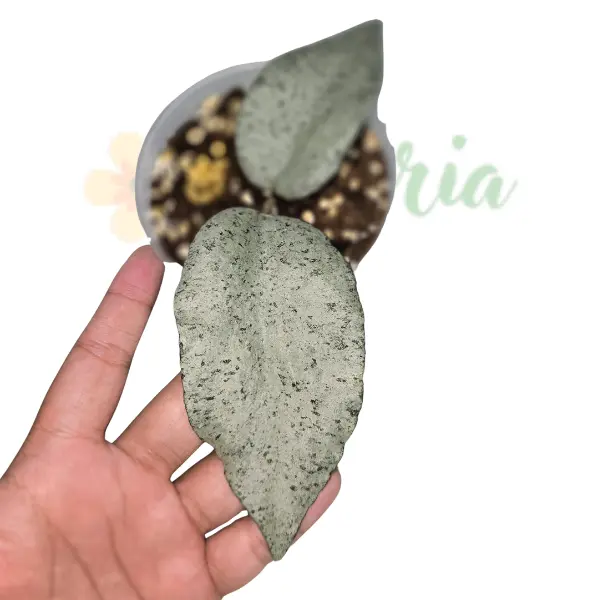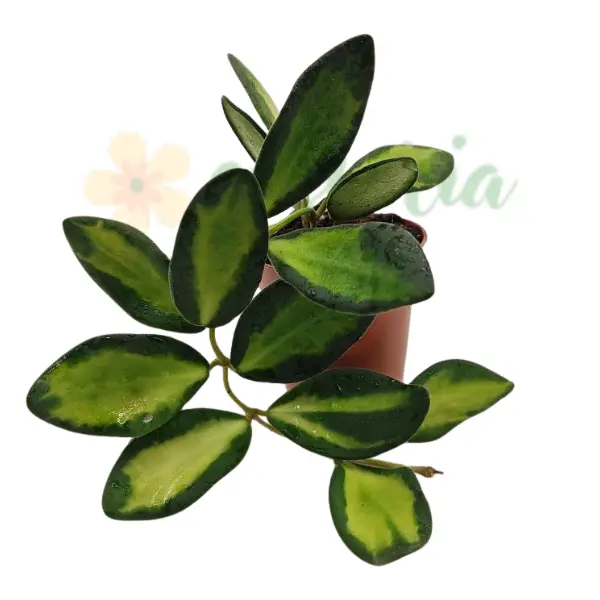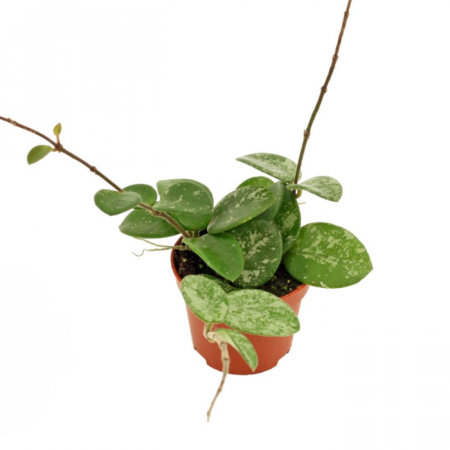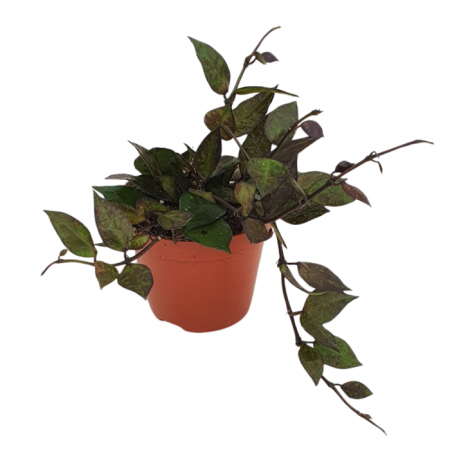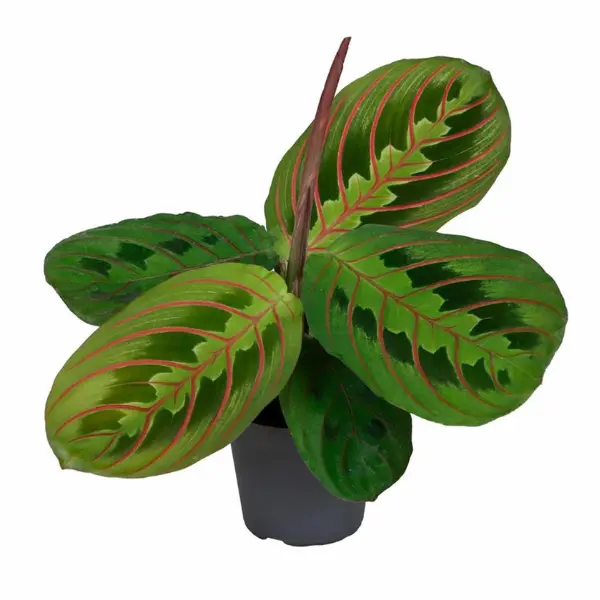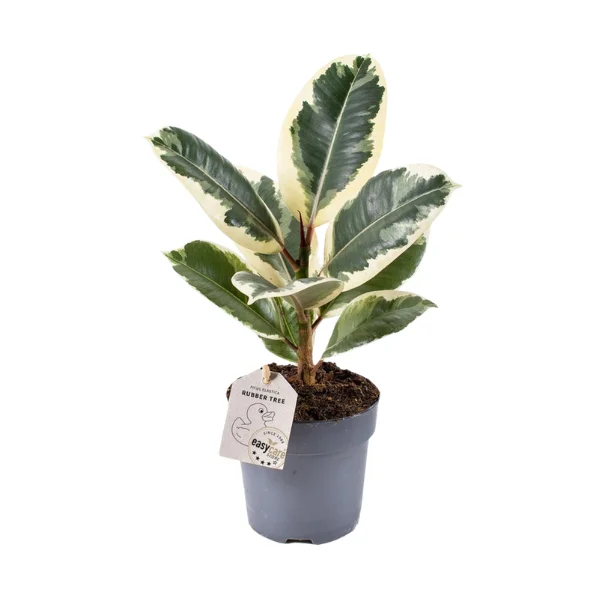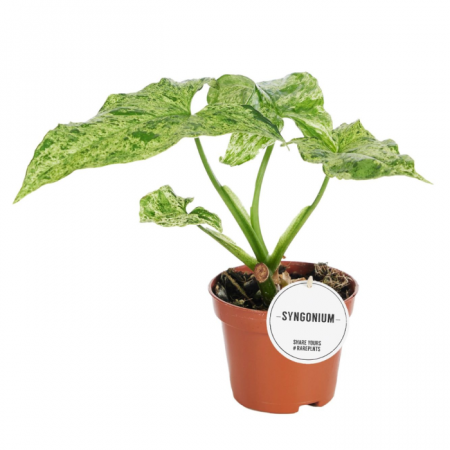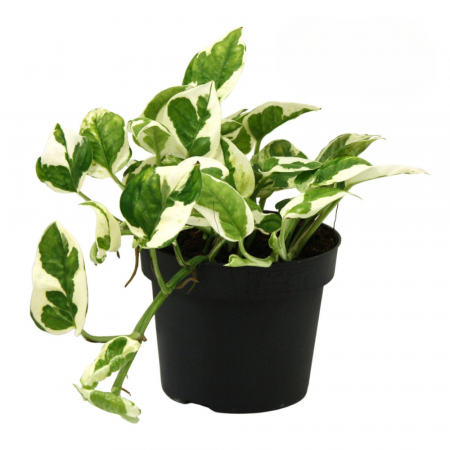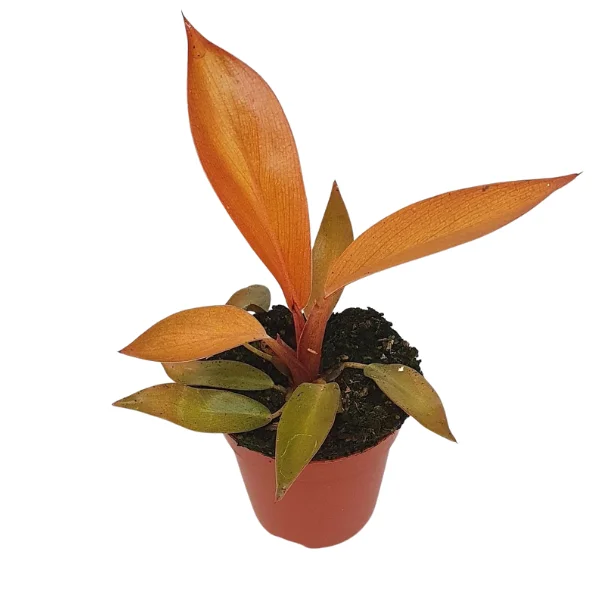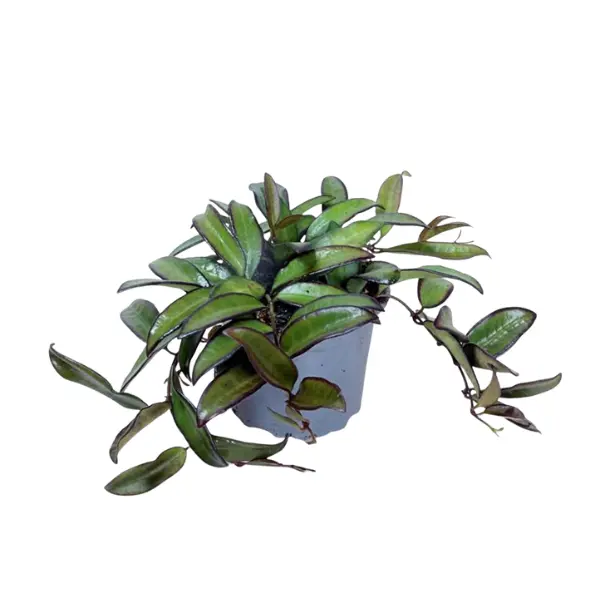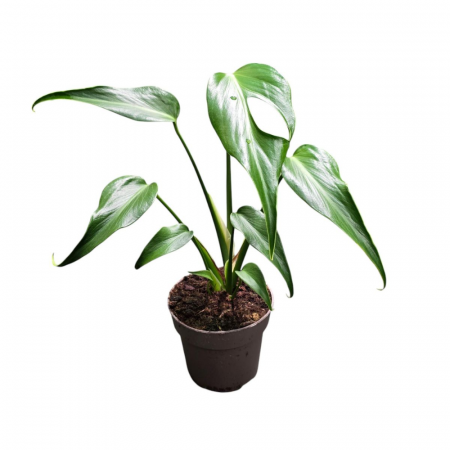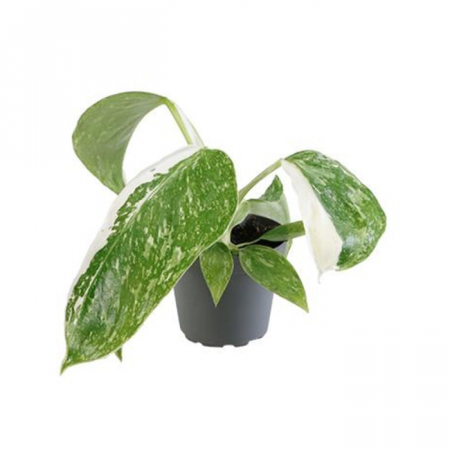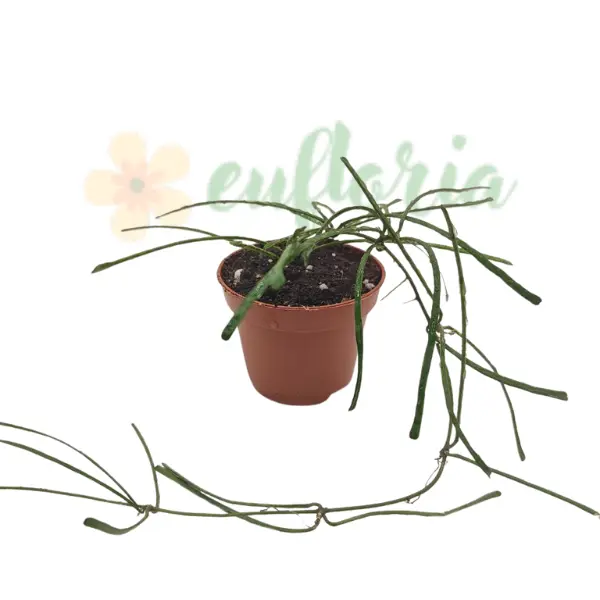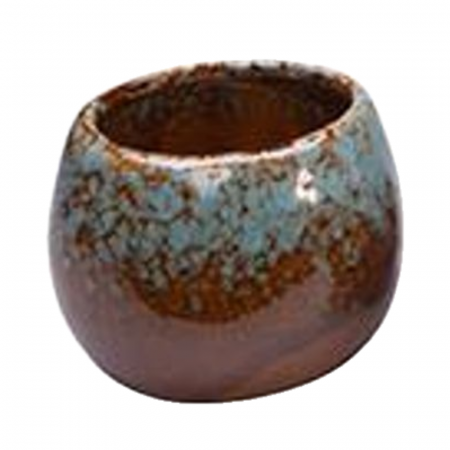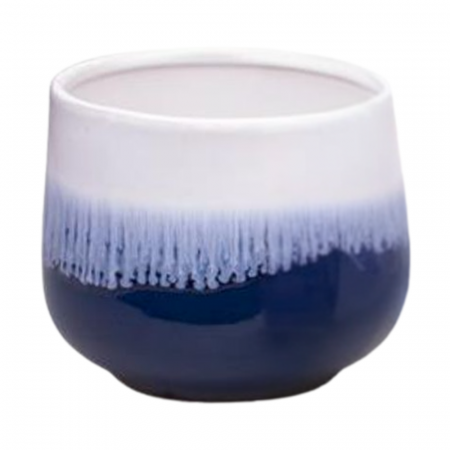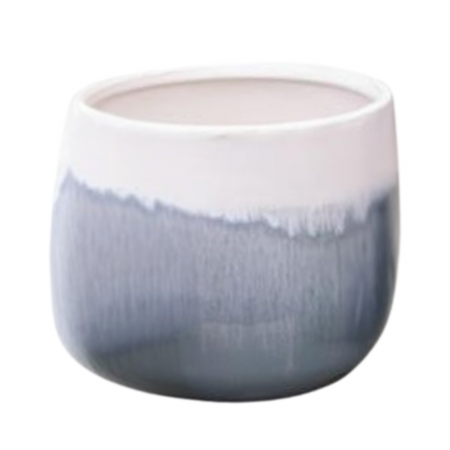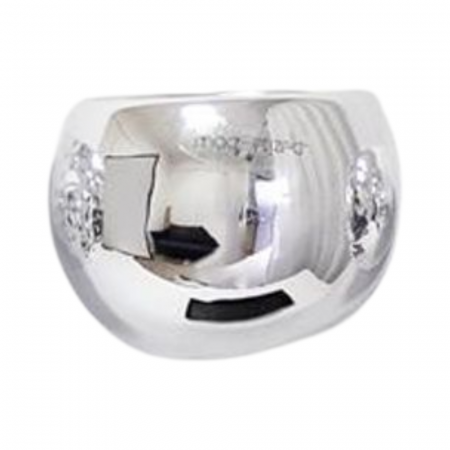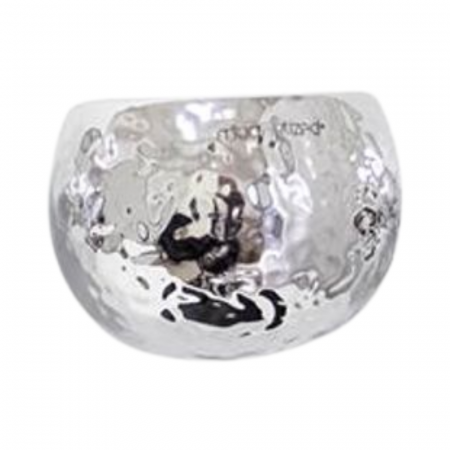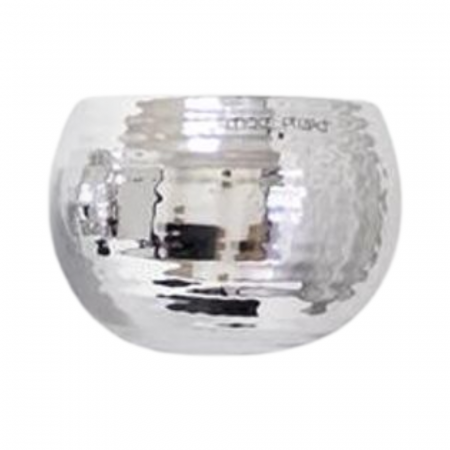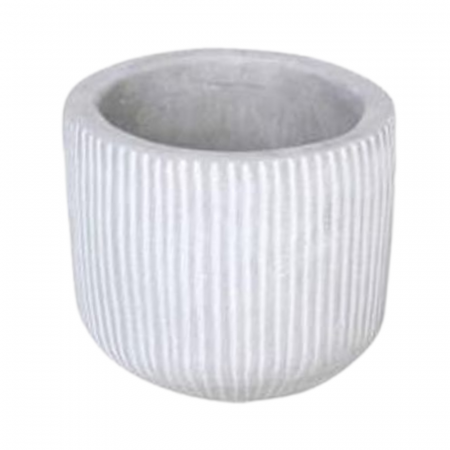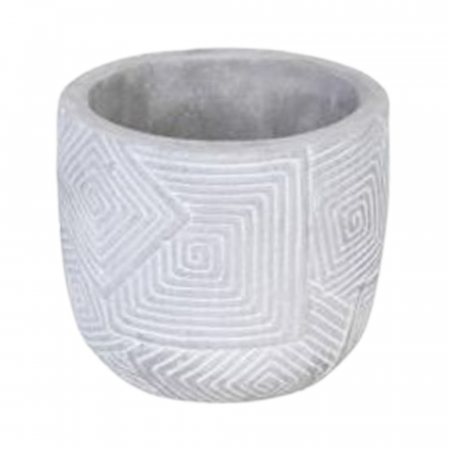Hoya clemensiorum SUMATRA Ø10.5cm
Approx height (including pot): 15 cm
Flowering state: No flowers
Pot diameter: 10.5 cm
- Description
- Characteristics
- Reviews (0)
- FAQ
Hoya clemensiorum Sumatra – A green masterpiece with fairy-tale leaves 🌿🌴
Born in the shade of the jungles of Southeast Asia, Hoya clemensiorum Sumatra is a plant that seems sculpted by nature. Its lanceolate leaves, up to 40 cm long and 10 cm wide, have a thick, deeply veined texture of light green, which acquires reddish hues under intense light. This The „vegetable crocodile skin” is a spectacle in itself, and the plant grows like a vine, climbing or hanging gracefully, ideal for trellises or hanging baskets. Upon maturity, often in the warmer months, it is showered with clusters of 1-2 cm starry, reddish-brown flowers, with a subtle scent of lemon or musk. Hardy and with a moderate growth rate, this Hoya requires only a little attention to show off its splendor, making it a favorite choice for those fascinated by rare plants.- Light: Place it in a spot with rich, indirect light, near a filtered eastern or southern window. It can tolerate mild morning sun, but midday rays can scorch the leaves.
- Water: Water when the soil is dry in the first 3-4 cm, about every 10-14 days. A pot with generous drainage keeps the roots away from excessive moisture.
- Humidity: It loves high humidity, 60% or more. In dry homes, a humidifier or a tray of pebbles and water works wonders.
- Temperature: Keep it between 18-29°C. Keep it away from cold temperatures below 15°C or cold drafts.
- Soil and Feed: Use a loose mixture of pine bark, perlite and coconut. Feed monthly in spring and summer with a well-diluted liquid orchid fertilizer.
Hoya clemensiorum Sumatra is a plant that tells an untold story of the jungle with its dramatic leaves and fragrant flowers. Perfect for adding a touch of refined wilderness to your garden. In your home, this rare Hoya conquers with its sculptural presence. Whether you are a collector or just a green-loving dreamer, Hoya clemensiorum Sumatra will bring the jungle closer to you.
Lungime: 15 cm
Greutate (kg): 0.5 Kg
Denumire: Hoya
Diametru: 10.5 cm
Cerințe lumină: Partial umbra
Tip plantă: Decorative
Utilizare: Interior
Tip suport: Ghiveci
Material Suport: Plastic
What differentiates Hoya clemensiorum SUMATRA from other forms?
The SUMATRA form is distinguished by its long, narrow, deeply veined leaves with a very clear contrasting pattern. It is known for its leaf appearance, not for its frequent flowering.
Does it need bright light?
Yes. To maintain firm texture and leaf pattern, bright but indirect light is recommended. Avoid intense direct sunlight.
Is it an easy-to-care plant?
It is rather moderate in difficulty. It grows slowly and appreciates a stable environment, a very aerated substrate and moderate watering.
Does the SUMATRA form bloom often?
It rarely flowers indoors and only after reaching maturity. The flowers are typical of the Hoya genus, waxy, but this form is grown primarily for its foliage.
What kind of substrate does it need?
A very aerated mixture: shredded bark, perlite, a little peat and possibly coconut chips. Excess water can damage the roots.
Is it suitable for beginners?
For advanced beginners or enthusiasts who already have experience with the slower growing Hoya species.

![Hoya clemensiorum Sumatra [1] Hoya clemensiorum Sumatra [1]](https://gomagcdn.ro/domains2/eufloria.ro/files/product/large/hoya-clemensiorum-sumatra-d10-5-476130.png)
![Hoya clemensiorum Sumatra [2] Hoya clemensiorum Sumatra [2]](https://gomagcdn.ro/domains2/eufloria.ro/files/product/large/hoya-clemensiorum-sumatra-d10-5-805325.png)
![Hoya clemensiorum Sumatra [0] Hoya clemensiorum Sumatra [0]](https://gomagcdn.ro/domains2/eufloria.ro/files/product/medium/hoya-clemensiorum-sumatra-d10-5-476130.png)
![Hoya clemensiorum Sumatra [1] Hoya clemensiorum Sumatra [1]](https://gomagcdn.ro/domains2/eufloria.ro/files/product/medium/hoya-clemensiorum-sumatra-d10-5-805325.png)
